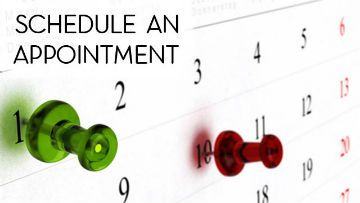When you are backed up against the pain you no longer have to put up with those pesky backaches as new and advanced interventional procedures offer a quick and easy alternative to surgery.
If there's one kind of ache that most of us are familiar with, it's a backache. It may originate in almost any part of the back and immobilise us. The worst part is that just when you think the pain has settled, it resurfaces, forcing those who stay on painkillers, do rounds of physiotherapists or keep switching doctors in search of relief. "Despite pain being the fifth vital sign, it is ignored by doctors until it shows on an MRI scan," says Dr K J Choudhury, senior consultant, pain management, Indraprastha Apollo Hospitals.
According to estimates, spinal pain, particularly lower back pain, affects about 40 to 80 per cent of the population in a lifetime. And, this is going to be worse with experts predicting that in the coming years 80 per cent of the population will have spinal or low back pain at some point or the other during their lifetime. "With younger and younger complaining of backache, we are witnessing a paradigm shift in the age group of people suffering from back pain," says Dr Ashok K Saxena, international pain specialist and editor of Indian Journal of Pain.According to experts, apart from poor dietary habits and high stress level, lack of physical activity and sitting in the same posture at a stretch are the main reasons why more and more people are getting a bad back pain.
CONSULT A PAIN SPECIALIST
CHRONIC pain is a disease in itself. The earlier this is treated, the better. According to experts in pain management, ninety percent of the people with back pain just require simple medication and treatment which doesn't cost much. But unfortunately one in five patients with chronic pain in India don't get the right treatment in time mainly because they continue to consult doctors who are unable to arrive at a diagnosis and cure quickly. "Often doctors tell their patients that their pain is in the mind when they are unable to find the source of pain through scans," says Dr P N Jain, President, Indian Society for the Study of Pain (ISSP).
According to Dr Jain, such people keep living in acute pain which later turn into chronic pain and require costly procedures. "It is important to move on from an orthopaedician to a pain specialist if the former is unable to pinpoint the source of pain," says Dr Saxena. Pain specialists deal in the management of pain that ranges from migraine to neck pain to cancer pain. According to experts, the approach of a pain specialist in finding a cure for back pain differs from that of an orthopaedician's."Many orthopaedicians choose a conservative approach such as a surgery to cure your back pain conditions. Whereas pain specialists mainly deal in noninvasive management of pain," says Dr Kailash Kothari, spine and pain physician, Breach Candy Hospital, Mumbai.
Also, they have an edge over other specialists as their approach is holistic. They are trained in delivering pharmacological medication, precision diagnostic and interventional procedures which are required when conventional methods fail. For instance, studies suggest that more than half the patients who see a doctor for back pain undergo MRI scans. And even though all of them had healthy backs, two out of three of them came back with M.R.I. reports that showed disk problems. In such cases while an orthopaedician usually suggests surgery by trusting the imaging results, pain specialists apply other approaches to be sure about the source of pain generator. "Scans don't tell you the whole story, which is why we try to investigate the sources of pain generator which could be in the muscles or discs or facet joints or spinal canal stenosis through newer diagnostic techniques such as diagnostic injections or nerve block or provocative discography," says Dr Kothari.
TECHNIQUES TO CURE PAIN
There are no simple cures for backache, is what most people suffering from it think. Most of us put up with chronic back pain and keep suffering for years thinking that the damage to our spine is irreversible and we have to learn to live with it. What many of us might not know is the growing number of interventional procedures to treat all kinds of backache problems without a cut in the body. These are an alternative to surgeries, which most patients fear going for and cost a lot. "Ninety per cent of painrelated surgery can be avoided by doing interventional procedures which assure high success rate, have low morbidity, cost less and doesn't require hospitalisation.
Moreover these procedures can be repeated without any morbidity," says Dr Neeraj Jain, senior consultant, pain management, Spine Disc and Pain Clinic. For the first time in India, a set of guidelines on back pain diagnosis and treatment are released by an association of pain specialists. Formulated by ISSP in collaboration with the Brufen Foundation, the protocol and guidelines are formulated to help doctors in providing a welldefined sequence of diagnostic investigations and the line of treatment for specific conditions associated with acute or chronic pain. The guidelines also include a list of advanced interventional procedures which could be done in treating various back ache problems. Here we inform you about a few of them which have helped many in getting rid of their pain.
Vertebroplasty
Had you been taken to the doctor for a verterbral collapse some years back, you would have taken weeks to recuperate from a major surgery. Today, an expert in interventional procedures takes less than half an hour to fix your broken spine bone. A patient with verterbral collapse, either due to an injury or osteoporosis or bone metastatis, are nowadays treated with vertebroplasty, a non-invasive, quick fix procedure done under local anaesthesia. The doctor first identifies the affected vertebra and subsequently injects a special type of liquid cement material into the centre of the vertebral body. Once set, the cement gives the vertebra extra strength, and gives immediate relief from the pain. The patient is discharged the same evening and is able to walk the next day. "It's an excellent procedure with very low incidence of side effects and morbidities in patients," says Dr Neeraj Jain.
RECOMMENDED FOR:
Osteoporotic fractures, vertebral haemangiomas, painful spine bones after spread of cancer, non cancerous painful tumours of spine bones and to augment strength of weak spine bone for other surgical procedures.
Intradiscal Electrothermal Therapy (IDET)
If you have been suffering from low back disc pain for more than six months without any relief from exercises, medication and corticosteroid injections, it's time to talk to your doctor about IDET.
IDET is a technique to treat discogenic back pain. It uses a probe inserted into the disc to heat the tissues within the affected disc. Heating the inside of the disc causes the tissues to shrink. It also burns the small nerve fibres in the periphery of the disc. To put it simply it reduces the volume of disc by burning the tissues. "This procedure is developed for the treatment of chronic lower back pain originating in discs," says Dr Choudhury.
IDET is a safe procedure with fewer complications arising in not more than 20 per cent of people going for it. But the most important aspect of this procedure is choosing the right patient.
Patients must fit into the criteria and should show lack of satisfactory improvements with intensive exercise, oral anti-inflammatory medication and physiotherapy. Also, people with weak spine or inflammatory arthritis and people with advanced stages of disc failures are not recommended to go for this procedure.
RECOMMENDED FOR:
For patients with symptoms from one or more discs, with tears or fissures in which the nucleus is contained and where a disc is bulging but has not ruptured.
Spinal Cord Stimulation
SPINAL cord stimulation offers hope for those patients who have not experienced success with conventional therapies for spinal pain relief. It's an advanced as well as expensive procedure where a small pulse generator is implanted in the back which sends low-level electrical signal to the spinal cord or to specific nerves to block pain signals from reaching the brain. The procedure is usually done using a local anaesthetic and a sedative. "In simple words it is a pacemaker implantation for spinal cord conditions," says Dr Choudhury.
Only selected patients qualify for this procedure, who have had a successful trial period with the spinal cord stimulator, which takes about 50,000. So, you don't have to take a risk of spending huge money on this procedure which might not show good results for your condition. "It's a very common procedure in western countries but here I do about 5 to 6 procedures in a year. And, my patients haven't come to me for complications yet," says Dr Choudhury. On an average, a person doesn't need the stimulator more than an hour a day.Earlier the stimulator came with a battery life of 2 to 5 years but nowadays they also come with rechargeable batteries.
RECOMMENDED FOR:
Spinal cord stimulation is recommended when conservative methods fail to relieve pain. However, in certain conditions it is an ideal treatment: people with failed back or neck surgery syndrome, pain owing to peripheral vascular disease and those in ischaemic pain.





